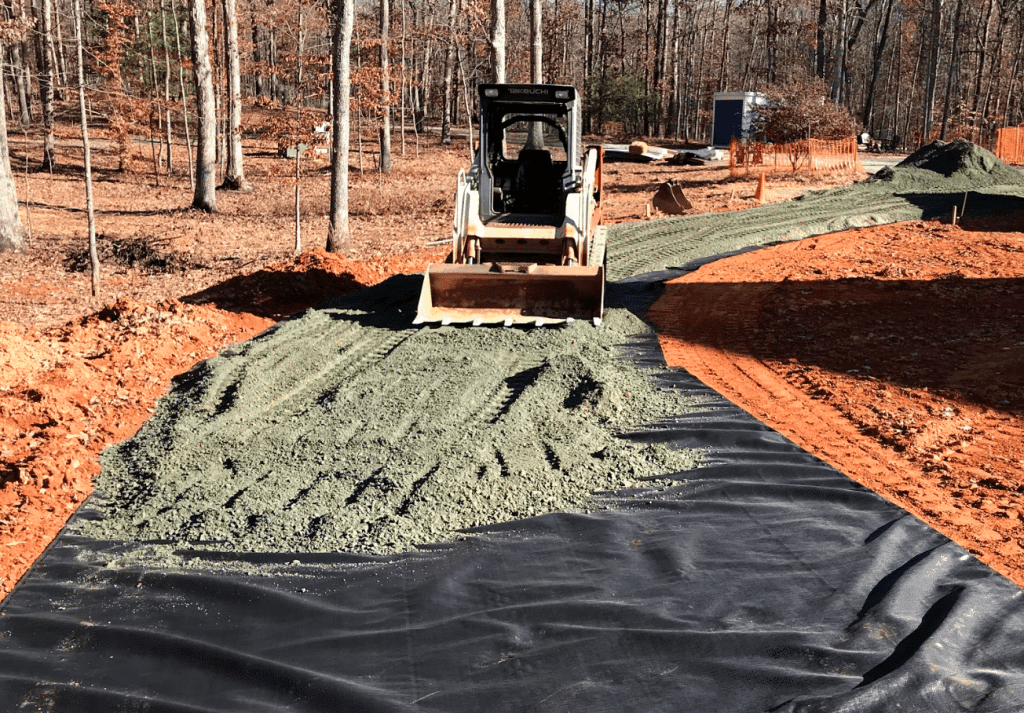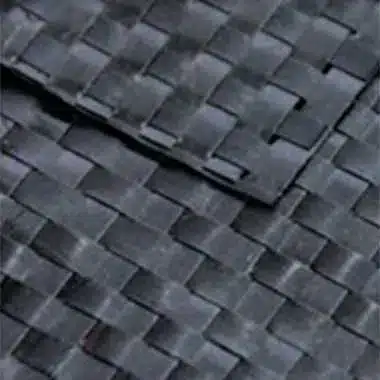+86-159 9860 6917
info@geofantex.com
geofantex@gmail.com
+86-400-8266163-44899
Maintaining a beautiful property often involves managing weeds and ensuring proper drainage. Landscape fabric plays a crucial role in achieving these goals, but understanding when to use woven versus nonwoven fabric is essential.

Woven vs Nonwoven Landscape Fabric: A Comprehensive Comparison
When it comes to landscaping, choosing the right fabric is crucial for long-term success. Two primary types of landscape fabrics dominate the market: woven and nonwoven. Both serve similar purposes, such as weed control and soil stabilization, but they differ in their construction, durability, and ideal applications. Understanding these differences can help you select the best material for your specific landscaping needs.
Woven Landscape Fabric
- Construction: Woven landscape fabric is made by weaving polypropylene or polyethylene fibers together, creating a strong, durable material. The weaving process leaves small gaps between the fibers, allowing for water and air to pass through while blocking sunlight to prevent weed growth.
- Durability: Woven fabric is highly durable, making it ideal for applications where strength and longevity are required, such as under gravel or heavy mulch. Its robust structure resists tearing and punctures, which is particularly beneficial in areas with high foot traffic or heavy landscaping equipment.
Ideal Applications:
- Weed Control: Woven fabric is effective at preventing weed growth, especially in areas with larger or more aggressive weeds.
- Soil Stabilization: Due to its strength, woven fabric is excellent for stabilizing soil in garden beds, driveways, and pathways.
- Erosion Control: The material’s durability makes it suitable for erosion control in sloped areas or regions prone to heavy rainfall.
Pros:
- Highly durable and resistant to tearing.
- Effective for long-term weed control.
- Ideal for heavy-duty landscaping projects.
Cons:
- Limited permeability compared to nonwoven fabric.
- More expensive due to its durability and strength.
Nonwoven Landscape Fabric
- Construction: Nonwoven landscape fabric is made by bonding synthetic fibers together, usually through heat or chemical processes, creating a porous material. Unlike woven fabric, nonwoven fabric does not have a defined weave, resulting in a smoother texture with greater permeability.
- Durability: While nonwoven fabric is not as strong as woven fabric, it is more flexible and easier to handle. It is less resistant to tearing but provides better permeability, making it ideal for applications where drainage is a priority.
Ideal Applications:
- Drainage Systems: Nonwoven fabric is often used in drainage applications, such as French drains or under gravel layers, where water needs to flow freely through the material.
- Garden Beds: Its permeability allows for better water and air circulation, promoting healthier plant growth.
- Weed Control: Nonwoven fabric is effective at controlling smaller, less aggressive weeds.
Pros:
- Excellent water and air permeability.
- Easier to install and handle due to its flexibility.
- More cost-effective for smaller projects.
Cons:
- Less durable and more prone to tearing.
- Not suitable for heavy-duty applications.
Choosing between woven and nonwoven landscape fabric depends on your specific landscaping needs. If you require a strong, durable material for heavy-duty applications like soil stabilization or erosion control, woven fabric is the better choice. However, if your project prioritizes drainage and ease of installation, nonwoven fabric offers the flexibility and permeability needed for optimal performance. Understanding these differences ensures you select the right fabric to achieve long-lasting and effective landscaping results.

Key Differences Between Woven and Nonwoven Fabric
Understanding the key differences between woven and nonwoven fabrics is essential for selecting the right material for various applications, whether in landscaping, construction, or other industries.
Manufacturing Process
- Woven Fabric: Made by interlacing two sets of yarns or threads in a crisscross pattern (warp and weft). This weaving process creates a strong, grid-like structure.
- Nonwoven Fabric: Produced by bonding fibers together through chemical, mechanical, heat, or solvent treatments. The fibers are arranged randomly or in a particular orientation but are not woven together.
Strength and Durability
- Woven Fabric: Generally stronger and more durable due to its structured weaving process. It can withstand heavy loads, resist tearing, and last longer in demanding conditions.
- Nonwoven Fabric: While still durable, it is not as strong as woven fabric. Nonwoven fabric is more susceptible to tearing, especially under heavy loads or in abrasive environments.
Permeability
- Woven Fabric: Offers limited permeability, with small gaps between the woven threads that allow for some water and air passage. However, its permeability is lower compared to nonwoven fabrics.
- Nonwoven Fabric: Highly permeable, allowing for better water and airflow. This makes it ideal for applications requiring effective drainage and ventilation.
Flexibility
- Woven Fabric: Less flexible due to its rigid structure. It may be more challenging to handle and install, especially in irregularly shaped areas.
- Nonwoven Fabric: More flexible and easier to handle. Its smooth texture and ability to conform to various shapes make it easier to install.
Applications
- Woven Fabric: Best suited for heavy-duty applications, such as:
- Soil stabilization
- Erosion control
- Weed control in high-traffic areas
- Base layers under gravel or pavers
- Nonwoven Fabric: Ideal for applications where permeability and ease of use are critical, such as:
- Drainage systems (e.g., French drains)
- Garden beds for improved water and airflow
- Lightweight weed control
Cost
- Woven Fabric: Typically more expensive due to its strength and durability. The cost is justified in applications requiring long-lasting performance.
- Nonwoven Fabric: Generally more cost-effective, especially for projects where high strength is not as crucial.
Aesthetic and Texture
- Woven Fabric: Has a more textured, grid-like appearance due to the weaving pattern.
- Nonwoven Fabric: Smoother and more uniform in appearance, with a felt-like texture.
The choice between woven and nonwoven fabric depends on the specific requirements of your project. Woven fabrics are better for heavy-duty applications requiring high strength and durability, while nonwoven fabrics excel in applications where flexibility, permeability, and ease of installation are more important. Understanding these key differences allows you to choose the most suitable fabric for your needs.
Choosing the Right Fabric: Woven vs. Nonwoven
Selecting the appropriate fabric for your project depends on various factors such as the specific application, environmental conditions, and desired longevity. Here’s a guide to help you choose between woven and nonwoven fabrics.
Assess the Application Requirements
- Heavy-Duty Needs: If your project involves heavy loads, such as stabilizing soil under driveways, paths, retaining walls, or areas prone to erosion, woven fabric is the better choice due to its strength and durability.
- Ideal for: Soil stabilization, erosion control, base layers under gravel or pavers, and high-traffic areas.
- Drainage and Filtration: For projects that require effective water drainage, such as French drains, garden beds, or landscape areas where water needs to pass through easily, nonwoven fabric is the ideal option due to its high permeability.
- Ideal for: Drainage systems, filtration layers, garden beds, and lightweight weed control.
Consider the Environmental Conditions
- High-Stress Environments: In areas exposed to harsh weather conditions, heavy foot traffic, or frequent use of landscaping equipment, woven fabric’s resistance to tearing and punctures will ensure long-term performance.
- Suitable for: Sloped areas, regions with heavy rainfall, and high-traffic landscapes.
- Low-Stress or Residential Gardens: For residential garden beds or light-duty landscaping where ease of installation and water flow are priorities, nonwoven fabric provides sufficient strength while offering better flexibility.
- Suitable for: Home gardens, flower beds, light-use paths.
Evaluate the Longevity Needs
- Long-Term Projects: If you’re planning a project where long-term durability is crucial, such as under permanent structures or in areas where you don’t want to replace the fabric frequently, woven fabric is the best investment.
- Recommended for: Permanent landscaping features, commercial projects, and infrastructure-related uses.
- Shorter-Term or Budget-Friendly Projects: For projects where budget is a concern or where the fabric may not need to last as long, nonwoven fabric offers a cost-effective solution without compromising the necessary functionality.
- Recommended for: Temporary installations, budget-conscious projects, and smaller-scale landscaping.
Ease of Installation
- Challenging Landscapes: If you’re working with irregularly shaped landscapes or areas that require the fabric to conform to curves and slopes, nonwoven fabric’s flexibility and ease of handling make it the preferable option.
- Best for: Irregular shapes, contours, curves.
- Straightforward Layouts: In areas with a straightforward layout, such as large, flat surfaces or grid-based designs, woven fabric’s rigidity is less of a hindrance and can even help in maintaining straight, uniform installation.
- Best for: Flat areas, straight paths, uniform layouts.
Cost Considerations
- Budget Constraints: Nonwoven fabric generally costs less, making it a better option for budget-conscious projects or for covering large areas where cost is a significant factor.
- Ideal for: Large-scale projects, and budget-friendly solutions.
- Investment in Durability: If your project can accommodate a higher upfront cost for the sake of durability and longevity, woven fabric’s higher price is justified, particularly in demanding environments.
- It ideal for: Long-term investments, and commercial projects.
Choosing between woven and nonwoven fabric requires careful consideration of your project’s specific needs. For strength, durability, and long-term performance in heavy-duty applications, woven fabric is the ideal choice. However, for projects requiring flexibility, high permeability, and ease of installation, nonwoven fabric is often the better option. Evaluating your environmental conditions, budget, and the nature of the project will help guide you to the right decision.
Whether you’re landscaping a residential garden or a commercial property, understanding the strengths of woven and nonwoven landscape fabric ensures you choose the right material for optimal performance. Each type serves specific needs, from weed control to soil protection and moisture management, contributing to a healthier and more sustainable landscape.



Get Free Sample
We’ll respond as soon as possible(within 12 hours)






















